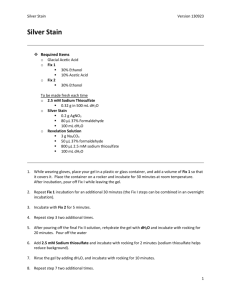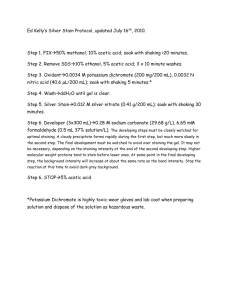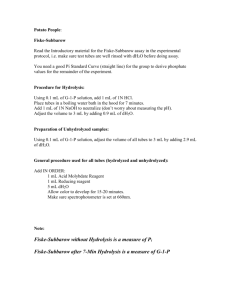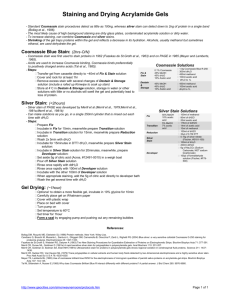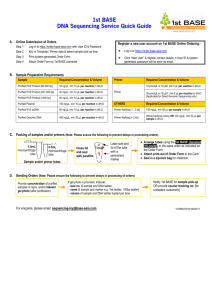Bielschowsky’s Silver Stain protocol
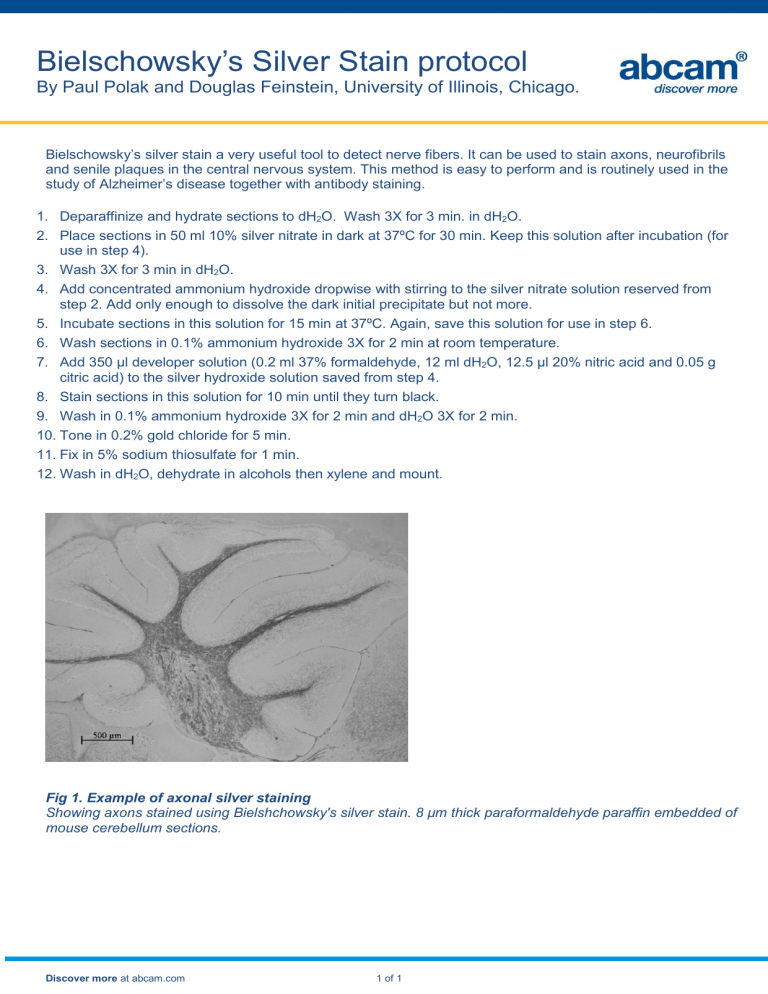
Bielschowsky’s Silver Stain protocol
By Paul Polak and Douglas Feinstein, University of Illinois, Chicago.
Bielschowsky’s silver stain a very useful tool to detect nerve fibers. It can be used to stain axons, neurofibrils and senile plaques in the central nervous system. This method is easy to perform and is routinely used in the study of Alzheimer’s disease together with antibody staining.
1. Deparaffinize and hydrate sections to dH
2
O. Wash 3X for 3 min. in dH
2
O.
2. Place sections in 50 ml 10% silver nitrate in dark at 37ºC for 30 min. Keep this solution after incubation (for use in step 4).
3. Wash 3X for 3 min in dH
2
O.
4. Add concentrated ammonium hydroxide dropwise with stirring to the silver nitrate solution reserved from step 2. Add only enough to dissolve the dark initial precipitate but not more.
5. Incubate sections in this solution for 15 min at 37ºC. Again, save this solution for use in step 6.
6. Wash sections in 0.1% ammonium hydroxide 3X for 2 min at room temperature.
7. Add 350 μl developer solution (0.2 ml 37% formaldehyde, 12 ml dH
2
O, 12.5 μl 20% nitric acid and 0.05 g citric acid) to the silver hydroxide solution saved from step 4.
8. Stain sections in this solution for 10 min until they turn black.
9. Wash in 0.1% ammonium hydroxide 3X for 2 min and dH
2
O 3X for 2 min.
10. Tone in 0.2% gold chloride for 5 min.
11. Fix in 5% sodium thiosulfate for 1 min.
12. Wash in dH
2
O, dehydrate in alcohols then xylene and mount.
Fig 1. Example of axonal silver staining
Showing axons stained using Bielshchowsky's silver stain. 8 µm thick paraformaldehyde paraffin embedded of mouse cerebellum sections.
Discover more at abcam.com 1 of 1
